
Know the Risks
What is Sepsis?
Sepsis is the body’s extreme response to an infection. It is life-threatening, and without timely treatment, sepsis can rapidly lead to tissue damage, organ failure, and death.
Sepsis happens when an infection you already have in your skin, lungs, urinary tract or somewhere else triggers a chain reaction throughout your body.
According to the CDC, more than 1.5 million people get sepsis each year in the U.S. and about 250,000 die from the diseases. As many as 92% of sepsis cases originate in the community.
Who is at Risk?
Anyone can get an infection, and almost any infection can lead to sepsis. People with chronic conditions such as diabetes, lung disease, cancer, and kidney disease, are at higher risk of developing infections that can lead to sepsis. Sepsis more commonly occurs in:

Adults 65 or Older

People with Weakened Immune Systems

People with Chronic Medical Conditions

Children Younger than One

Adults 65 or Older

People with Weakened Immune Systems

People with Chronic Medical Conditions

Children Younger than One
If you or someone you know is showing signs or symptoms of sepsis please call 911 or go to the nearest emergency room.
Spot the Signs
What are the Signs and Symptoms of Sepsis
It’s important to look for a combination of the warning signs of sepsis. Spotting these symptoms early could prevent the body from entering septic shock, and could save a life. The symptoms of sepsis can include any one or a combination of the following:

Confusion or Disorientation
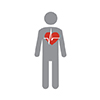
High Heart Rate
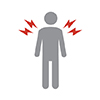
Extreme Pain or Discomfort
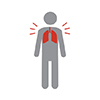
Shortness of Breath
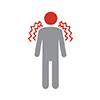
Fever, or Shivering, or Feeling Very Cold
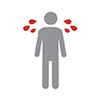
Clammy or Sweaty Skin
If you or someone you know is showing signs or symptoms of sepsis please call 911 or go to the nearest emergency room.
Act Fast
Sepsis Treatment
Sepsis should be treated as a medical emergency.
In other words, sepsis should be treated as quickly and efficiently as possible as soon as it has been identified. This means rapid administration of antibiotics and fluids.
A 2006 study showed that the risk of death from sepsis increases by and average of 7.6% with every hour that passes before treatment begins.
Catholic Health Emergency Rooms
Catholic Health emergency rooms are open 24/7 and staffed by board-certified emergency medicine physicians who are experienced in treating every kind of emergency, including sepsis.
Kenmore Mercy Hospital
2950 Elmwood Ave
Kenmore, NY 14217
(716) 447-6100
Click for Directions
Mount St. Mary's Hospital
5300 Military Rd
Lewiston, NY 14092
(716) 297-4800
Click for Directions
St. Joseph Campus
2605 Harlem Rd
Cheektowaga, NY 14225
(716) 891-2400
Click for Directions
Mercy Hospital of Buffalo
565 Abbott Rd
Buffalo, NY 14220
(716) 826-7000
Click for Directions
Sisters of Charity Hospital
2157 Main St
Buffalo, NY 14214
(716) 862-1000
Click for Directions
Mercy Ambulatory Care Center
3669 Southwestern Blvd
Orchard Park, NY 14127
(716) 662-0500
Click for Directions
Kenmore Mercy Hospital
2950 Elmwood Ave
Kenmore, NY 14217
(716) 447-6100
Click for Directions
Mercy Hospital of Buffalo
565 Abbott Rd
Buffalo, NY 14220
(716) 826-7000
Click for Directions
Mount St. Mary's Hospital
5300 Military Rd
Lewiston, NY 14092
(716) 297-4800
Click for Directions
Sisters of Charity Hospital
2157 Main St
Buffalo, NY 14214
(716) 862-1000
Click for Directions
St. Joseph Campus
2605 Harlem Rd
Cheektowaga, NY 14225
(716) 891-2400
Click for Directions
Mercy Ambulatory Care Center
3669 Southwestern Blvd
Orchard Park, NY 14127
(716) 662-0500
Click for Directions
Helpful Documents and Links
Four Ways to Get Ahead of Sepsis
Fact sheet about steps you can take to protect yourself against sepsis.
Stay Healthy. Protect Yourself From Sepsis.
Fact sheet about the risks and symptoms related to sepsis.
